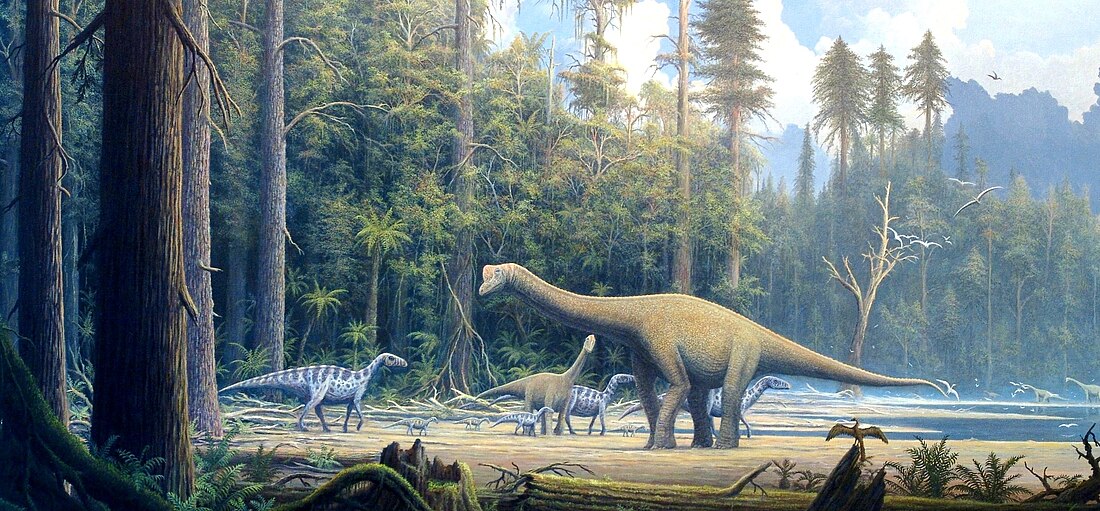Ìgbà Jùrásíkì
From Wikipedia, the free encyclopedia
Remove ads
The Jurassic is a geologic period and system that extends from about 199.6 Mya (million years ago) to 145.5± 4 Mya, that is, from the end of the Triassic to the beginning of the Cretaceous. The Jurassic constitutes the middle period of the Mesozoic Era, also known as the Age of Reptiles. The start of the period is marked by the major Triassic–Jurassic extinction event. However, the end of the Jurassic Period did not witness any major extinction event. The start and end of the period are defined by carefully selected locations; the uncertainty in dating arises from trying to date these horizons.

| Ìgbà Jùrásíkì 199.6–145.5 ẹgbẹgbẹ̀rún ọdun sẹ́yìn | |
| Mean atmospheric O2 content over period duration | ca. 26 Vol %[1] (130 % of modern level) |
| Mean atmospheric CO2 content over period duration | ca. 1950 ppm[2] (7 times pre-industrial level) |
| Mean surface temperature over period duration | ca. 16.5 °C[3] (3 °C above modern level) |
The chronostratigraphic term "Jurassic" is directly linked to the Swiss Jura Mountains. Alexander von Humboldt (*1769, † 1859) recognized the mainly limestone dominated mountain range of the Swiss Jura Mountains as a separate formation that was not at the time included in the established stratigraphic system defined by Abraham Gottlob Werner (* 1749, † 1817) and named it “Jurakalk” in 1795.[4][5][6] The name “Jura” is derived from the celtic root “jor” which was Latinised into “juria”, meaning forest (i.e. “Jura” is forest mountains).[4][5][7]
 |
Àyọkà yìí tàbí apá rẹ̀ únfẹ́ àtúnṣe sí. Ẹ le fẹ̀ jù báyìí lọ tàbí kí ẹ ṣàtúnṣe rẹ̀ lọ́nà tí yíò mu kúnrẹ́rẹ́. Ẹ ran Wikipedia lọ́wọ́ láti fẹ̀ẹ́ jù báyìí lọ. |
Remove ads
Itokasi
Wikiwand - on
Seamless Wikipedia browsing. On steroids.
Remove ads
